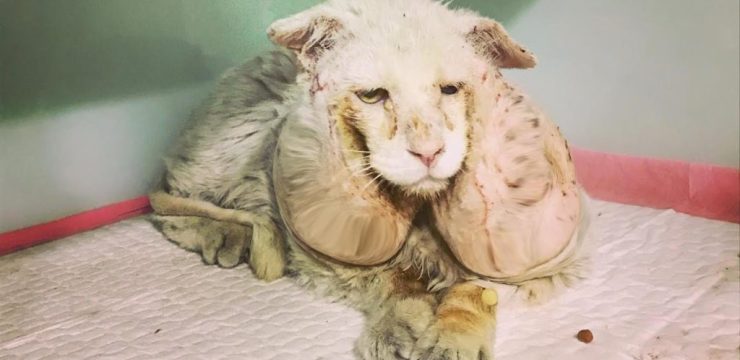When my wife went to the salon, I thought she’d come back with her gray hair dyed, like she usually did. Over the years, more and more silver strands had appeared, and honestly, I struggled with it. I wanted her to look “young” and vibrant, but clearly, she had different plans. When she sent me a selfie after her appointment, I was caught off guard—her gray hair was still there. My first reaction? Disappointment. I didn’t get it. Why would she want to keep the gray? But what I’ve learned since that moment has shifted my entire perspective. It’s not just about hair; it’s about self-love, acceptance, and a much larger cultural movement.

The Rise of the #GreyHairDontCare Movement
For decades, women have felt the pressure to hide their gray hair. Dyeing it was the norm, fueled by societal messages equating youth with beauty. But times are changing. There’s a growing trend of women across the globe proudly wearing their natural gray hair, and it’s not just a fashion statement—it’s a movement. The #GreyHairDontCare trend is shaking up long-held beauty standards, encouraging women to embrace their authentic selves.
Celebrities have played a big role in this shift. Actresses like Andie MacDowell, Helen Mirren, and Jodie Foster have confidently rocked their gray locks on the red carpet, signaling that it’s okay—no, it’s awesome—to let your gray hair show. Social media has also become a powerful platform for this movement. Instagram accounts like @agingwith_style_and_grays and @grey_so_what have gained massive followings, with women celebrating their gray strands as symbols of confidence and beauty. On TikTok, the hashtag #greyhair has garnered over 470 million views. The movement is more than a trend; it’s a revolution in how society perceives beauty.
The Pandemic and a Shift in Beauty Standards
Interestingly, the COVID-19 pandemic played a significant role in pushing this change forward. With salons shut down during lockdowns, many women were unable to maintain their usual dye routines. Some tried DIY hair dye kits, but others simply let their natural gray come through. What began as a temporary situation turned into a moment of liberation for many.
Without the usual pressure of social gatherings or the workplace, women found the freedom to embrace their natural gray hair. For many, it became a powerful experience. They realized they didn’t need to keep up appearances to feel beautiful. This pandemic-driven shift has led to a broader reevaluation of beauty standards, where natural aging is viewed as beautiful, not something to be hidden.
Why Gray Hair Is More Than Just a Fashion Choice
For many women, going gray is about more than just style—it’s an act of defiance against societal pressures. Women are often told they need to stay “young” to remain valuable. By embracing their gray hair, they are rejecting that notion, celebrating who they are at every age.
When my wife made the choice to keep her gray hair, I initially saw it as purely aesthetic. But now I understand that it was about much more than that. She was making a statement about her worth, showing that her value isn’t tied to looking young. Her decision was a reflection of self-confidence, a rejection of the idea that beauty fades with age.
This movement toward embracing gray hair reflects broader cultural trends about self-esteem, confidence, and mental health. For many women, accepting their gray hair means accepting themselves fully, and that’s incredibly empowering.
Social Media’s Role in Redefining Gray Hair
Social media has been a game-changer for the gray hair movement. Platforms like Instagram and TikTok have become spaces for women to share their gray hair journeys, offering tips, inspiration, and support to others on the same path. These gray-haired influencers are building communities that challenge the stereotypes around aging and beauty.
Accounts like @agingwith_style_and_grays are helping women feel confident about their gray hair, offering styling advice and celebrating the beauty of aging naturally. By sharing their stories, these influencers are normalizing gray hair in a way that wasn’t possible before, breaking down beauty barriers that have existed for decades.
Breaking Free From Beauty Stereotypes
For far too long, the beauty industry has marketed youth as the pinnacle of attractiveness. Gray hair was once seen as a symbol of aging, frailty, or irrelevance. But now, gray hair is celebrated as a mark of strength, wisdom, and authenticity.
According to research by the Centre for Appearance Research, the perception of gray hair is changing. Women in their 40s, 50s, and beyond are now seen as dynamic and stylish, with gray hair only adding to their confidence. This shift reflects a broader societal trend towards inclusivity and diversity in beauty standards.
The Future of the Hair Dye Industry
With the rise of the gray hair movement, one might wonder what the future holds for the hair dye industry. After all, the global market for hair dye is currently worth over $21 billion. While it’s unlikely that the demand for hair dye will vanish, the focus might shift. Companies could begin marketing products that enhance natural gray hair rather than covering it up. Dove, for example, has already launched its #KeepTheGrey campaign, which encourages women to embrace their natural color.
Conclusion: Embracing the Silver Strands
At the beginning of this journey, I wanted my wife to dye her hair, but now, I have nothing but admiration for her decision to keep her gray. It’s more than just a choice about hair color—it’s a statement of confidence and authenticity. Her silver strands represent her life, her experiences, and her strength.
For anyone considering going gray, remember that beauty isn’t about conforming to society’s standards. It’s about embracing who you are. Gray hair isn’t something to hide; it’s something to celebrate.





